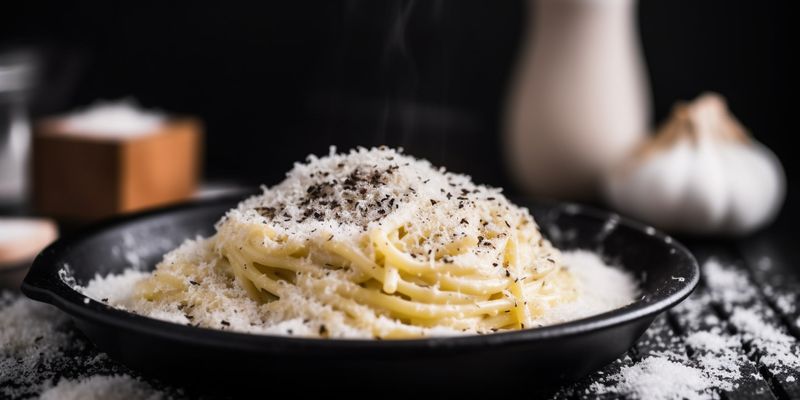
Why you should try this recipe
Pasta with roasted butternut squash is an easy and delicious recipe that will impress your dinner guests. The sweetness of the roasted butternut squash complements the richness of the pasta, creating a perfect balance of flavors. This recipe is perfect for autumn nights when you crave something hearty and comforting. Moreover, it is a great way to incorporate butternut squash into your diet, which is packed with vitamins and antioxidants.
Ingredients
- 500g pasta
- 600g butternut squash
- 2 tbsp olive oil
- 1 tsp salt
- 1 tsp black pepper
- 1 tsp dried thyme
- 3 garlic cloves
- 50g parmesan cheese
- 50g pine nuts
- 50g butter
- Fresh parsley for garnish
Instructions
- Preheat the oven to 200°C.
- Peel the butternut squash and cut into small cubes. Place them on a baking tray and drizzle with olive oil. Season with salt, black pepper and dried thyme. Crush the garlic cloves and add them to the tray. Mix well and roast in the oven for 25 minutes.
- In the meantime, cook the pasta according to package instructions. Drain and set aside.
- Toast the pine nuts in a dry pan over medium heat until golden brown. Set aside.
- Grate the parmesan cheese and set aside.
- Melt the butter in a pan over low heat. Add the cooked pasta, roasted butternut squash and pine nuts. Mix well and add the grated parmesan cheese. Stir until the cheese has melted and the pasta is coated in a creamy sauce.
- Serve hot, garnished with fresh parsley.
Variations
- Vegetarian/Vegan: To make this recipe vegan, simply omit the parmesan cheese and butter. You can substitute the butter with olive oil or vegan butter. You can also add nutritional yeast for a cheesy flavor.
- Gluten-free: Use gluten-free pasta instead of regular pasta.
- Spicy: Add some red pepper flakes or chili powder for a spicy kick.
- Creamy: Add some cream cheese or heavy cream for a creamier sauce.
- Protein-packed: Add some cooked chicken or shrimp to the pasta.
- Nut-free: Omit the pine nuts or substitute them with sunflower seeds or pumpkin seeds.
Conclusion
Pasta with roasted butternut squash is an easy and delicious recipe that is perfect for autumn nights. The sweetness of the roasted butternut squash complements the richness of the pasta, creating a perfect balance of flavors. This recipe is versatile and can be adapted to different dietary needs and preferences. Give it a try and impress your family and friends with this hearty and comforting dish!
FAQ
Can I use other types of squash instead of butternut squash?
Yes, you can use other types of squash like acorn, kabocha, or delicata squash. However, the cooking time and texture may vary.
How do I know if the butternut squash is roasted properly?
The butternut squash should be tender and lightly golden brown on the edges. You can test it by piercing it with a fork, it should be soft but not mushy.
Can I use other types of pasta?
Yes, you can use other types of pasta like penne, fettuccine, or linguine. Just adjust the cooking time according to the package instructions.
Can I add other vegetables to the dish?
Yes, you can add other vegetables like Brussels sprouts, broccoli, or cauliflower. Just make sure to adjust the cooking time and seasonings accordingly.
Can I make this dish vegan?
Yes, you can make this dish vegan by omitting the Parmesan cheese or using a vegan substitute. You can also use olive oil instead of butter.
Can I make this dish ahead of time?
Yes, you can make the roasted butternut squash ahead of time and store it in the fridge for up to 3 days. Just reheat it in the oven before adding it to the pasta.
Can I freeze this dish?
It is not recommended to freeze this dish as the texture of the pasta may become mushy and the roasted squash may become watery.
How do I store leftovers?
Store leftovers in an airtight container in the fridge for up to 3 days. Reheat in the microwave or oven before serving.
Can I use canned butternut squash instead of fresh?
It is not recommended to use canned butternut squash as it may have a different texture and flavor. Fresh butternut squash is recommended for this recipe.
Can I use dried herbs instead of fresh?
Yes, you can use dried herbs instead of fresh. Just use half the amount of dried herbs as they are more concentrated than fresh herbs.



